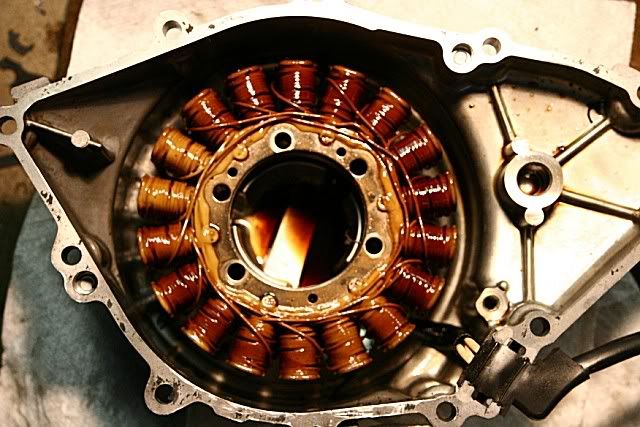Warchild
Benevolent Dictator
Recall I have mentioned several times over the years that if you tend to heavily work your FJR's electrical system the max by utilizing aux lights, lot's of heated clothing, etc, etc, it usually makes for an abbreviated stator lifespan.
Here's an example of what I am referring to.......
:lol: :lol: :lol: :lol: :lol: :lol:
Although this stator was still working as advertised when it was replaced with ElectroSports outstanding EGS-130 stator, it was a good idea to have it swapped out before this George heads out on this year's Iron Butt Rally in August.
Here's an example of what I am referring to.......
After a long ride few things are nicer than a fine meal.
Perhaps smoked salmon wrapped in smoky bacon while quaffing a Stone Smoked Porter ale.
Yes indeed, you could smoke an old shoe and it would probably be pretty tasty.
Some things however, are not so well received in their smoky state. Some things just shouldn't be smoked.
One such item is shown below.
.
.
.
.
.
.
.
.
.
.
.
.
.
.
.
.

Scary huh?
This is a stock stator with 90K on it from a 2005. It has seen extensive rally and general LD use with aux lights, heated gear, etc.
The OEM part is complete crap.
The cream colored parts are close to the stock color, darkened a bit. The nasty black bits are burned and actually have thick charred deposits like funky charcoal or something.
So while some of you are GB'n your way to Blingdom Come, who bought a new stator?
Putting my money where it counts,
GZ
:lol: :lol: :lol: :lol: :lol: :lol:
Although this stator was still working as advertised when it was replaced with ElectroSports outstanding EGS-130 stator, it was a good idea to have it swapped out before this George heads out on this year's Iron Butt Rally in August.
Last edited by a moderator:


































